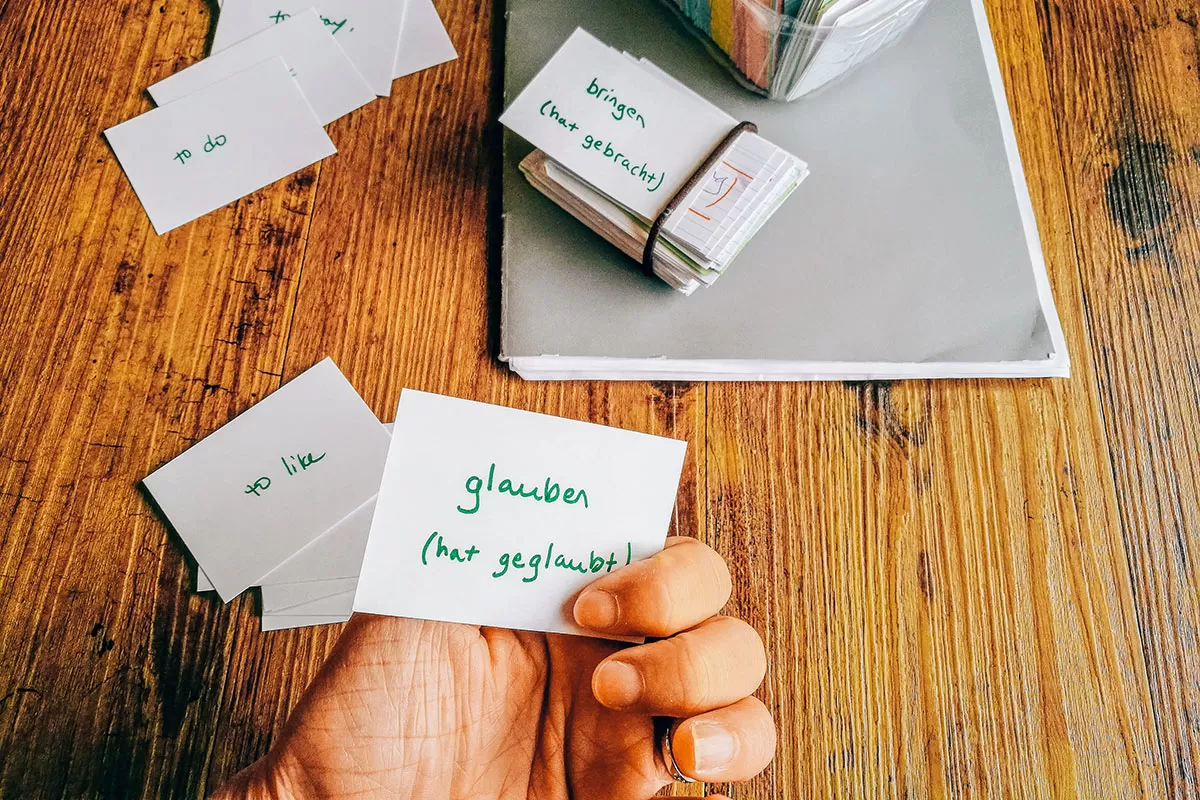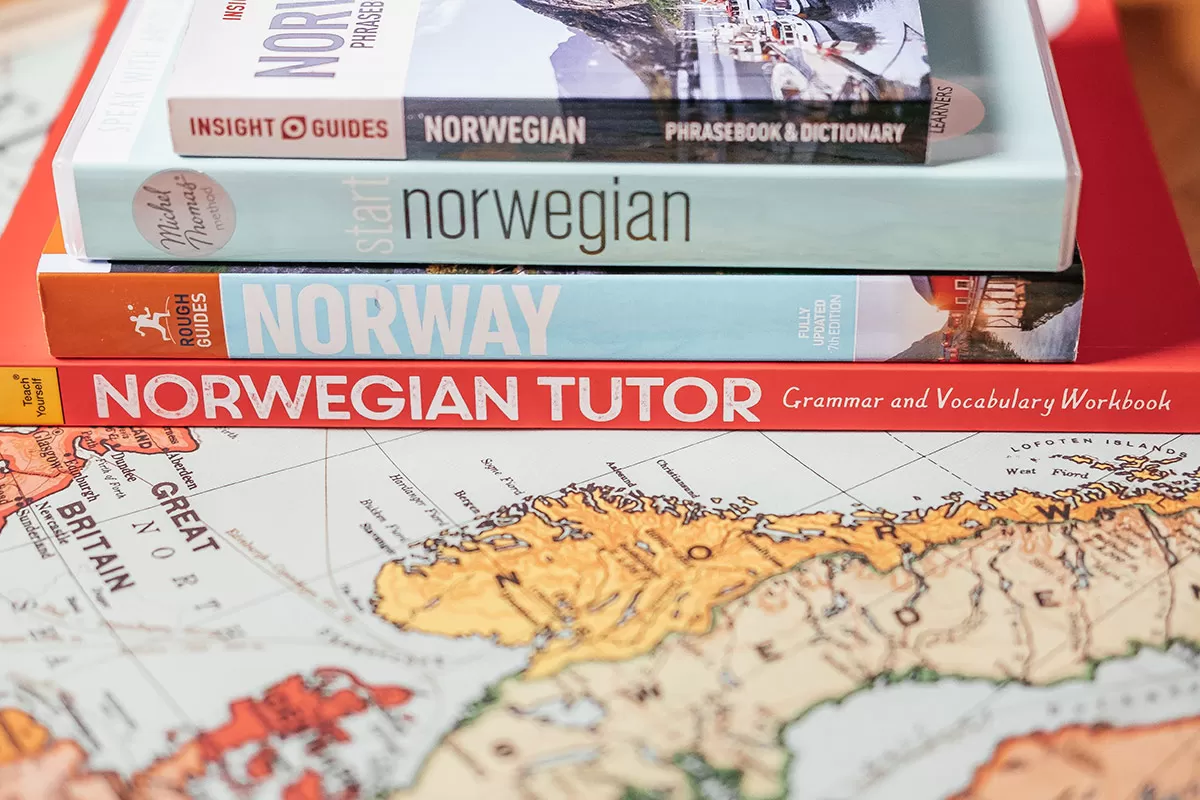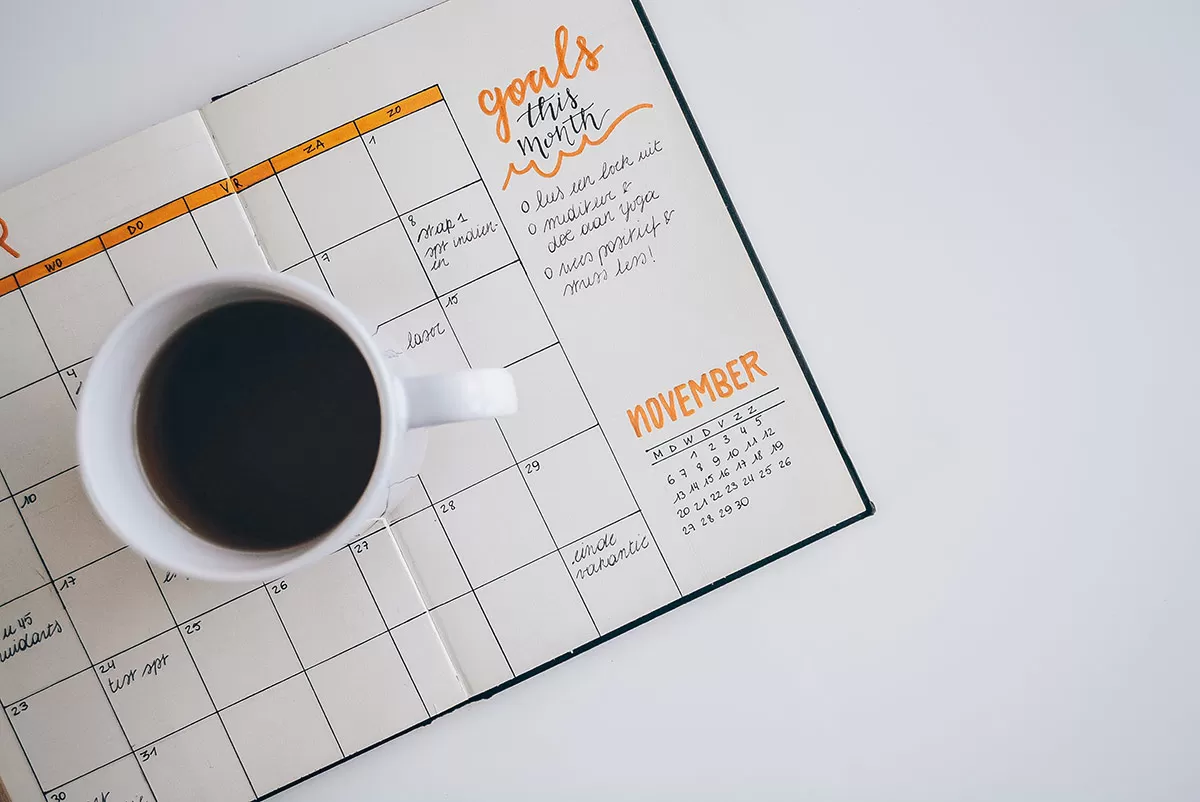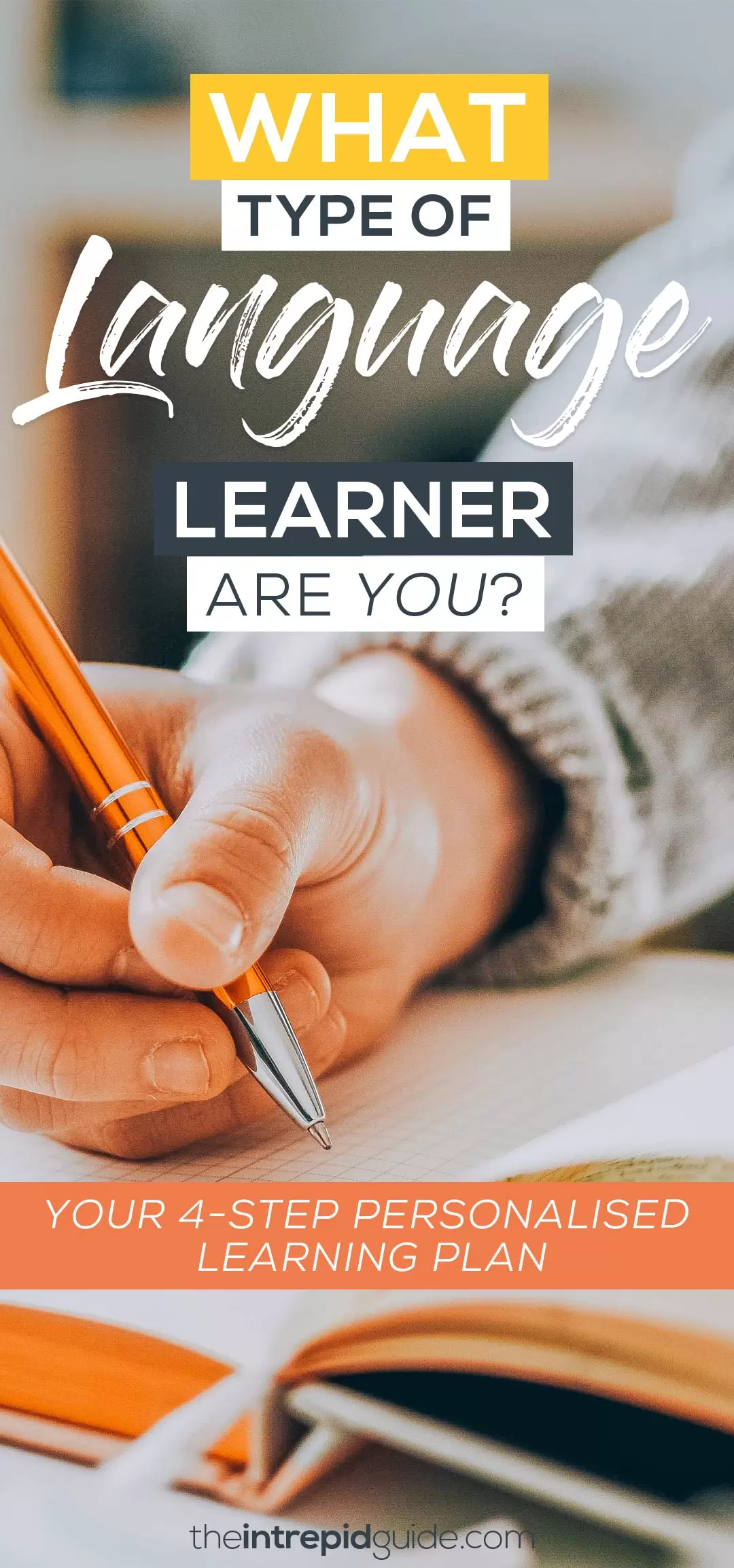Do you know what type of language learner you are? Are you a visual, aural, verbal, or a kinesthetic learner? Follow these steps and find out how to learn a language using a method that’s customised to you. From how to get started to what language resources to use. Here’s how to REALLY succeed in language learning.
It’s been said that true wisdom is knowing that you know nothing. Socrates spoke these immortal words.
At first glance, this might seem like a pessimistic observation but think about for a moment. If you accept that you don’t know everything but have a desire to learn, you’ll continue to grow and this growth will enrich your life.
There are many health benefits to learning a new language and with it comes discipline, wisdom and power. All of these strengths can be applied across the various facets of your life, no matter your age, background, or how well-travelled you are (or aren’t, yet!).
It can be tough finding time to learn a new language. It takes time, but more than that, it takes dedication, perseverance and organisation, especially when trying to fit your language study around your full-time job. But even the busiest people can learn languages, you just need a plan.
So, in order to help you get organised in your language learning journey, I’ve compiled this simple step-by-step checklist to help you get started. If you implement these steps, you’ll be well on your way to fluency, whether your goal is to be travel fluent or a proficient speaker.
Let’s get started!
Step 1: Identify and understand your learning style
Your learning style should be the determining factor in how you choose to learn a language. There’s no sense studying in a manner that isn’t going to help you progress. If you aren’t sure exactly what your learning style is, try taking this fun learning style quiz. It gets specific — so be sure to read all of the results!
There are four types of language learners that apply to the majority of learners. These are visual, aural, verbal, and kinesthetic learners. Below, we dive into each one of these and identify the best way to learn a language according to each style plus language learning tips to make the process easier.
Visual Learners
Best way to learn a language: Use videos, media, cultural immersion
 Visual learners learn best when they have an image or other visual medium to trigger data in their mind. If you’re a visual learner, a podcast on its own isn’t going to cut it. Sure, it’s great to hear the language spoken and be able to rewind and repeat — but without something to see and pair with what you’re hearing, you probably won’t remember much.
Visual learners learn best when they have an image or other visual medium to trigger data in their mind. If you’re a visual learner, a podcast on its own isn’t going to cut it. Sure, it’s great to hear the language spoken and be able to rewind and repeat — but without something to see and pair with what you’re hearing, you probably won’t remember much.
If this is you, watching YouTube lessons is likely to be far more effective than simply listening to the audio. If you do have audio, such as an Audiobook, accompany it with the e-book version or supporting text covering the same material. Work alongside the visual medium. That way, you’ll optimize your memorization and comprehension of the material.
Tips for visual learners:
- Write or draw a roadmap that plots out your fluency goals and keep it with you in your language learning notebook or journal. This should include markers to show progress along the way, with detailed notes taken between markers indicating what you’re learning and how. Maybe a certain lesson, piece of media, or trick you’ve picked up really seemed to jump you forward — jot it down, and then develop a plan to apply that tactic to future lessons.
- Watch other people speak the language as much as possible – like, actually watch them – focus on their lips, their facial expressions, their mannerisms. Try to mimic these yourself, because when it comes to language learning, repetition is key!
- Read articles and easy texts in the language you are learning. I’m currently using this excellent Short Stories series (available in over 15 languages) to help me learn Norwegian. Viewing words, particularly conjugated verbs, will help you comprehend their use in sentences and how the language works phonetically.
- One of the best ways to learn a language is by accessing online content from national broadcasting sites around the world. Sites like the BBC in the UK, RAI Italia in Italy, or NRK in Norway sometimes restrict who can access their online content such as series, movies or documentaries. The best and only way to unlock and access content around the world is by using a VPN. This also gives you an extra layer of safety as you surf the internet as it protects your IP address (ie. your actual location). It’s best practice to always use a VPN anyway, so it’s a great investment to make. I personally use NordVPN which I use on my laptop and iPhone.
Aural Learners
Best way to learn a language: Use Audiobooks, podcasts, movies, one-on-one lessons
 Aural learners are a talented breed — they have a unique ability to capture information by simply hearing it. One of the key ways an auditory learner can optimise their language learning experience is to keep it simple. Not that I’m here to preach minimalism – what I’m saying is that there’s no need to fix what isn’t broken.
Aural learners are a talented breed — they have a unique ability to capture information by simply hearing it. One of the key ways an auditory learner can optimise their language learning experience is to keep it simple. Not that I’m here to preach minimalism – what I’m saying is that there’s no need to fix what isn’t broken.
If you’re listening to a language learning podcast like Live Lingua or Coffee Break Languages and experiencing consistent progress by working through the exercises or material, then stick with that medium. There’s no need to add additional workflows that may only complicate things.
Tips for aural/auditory learners:
- Aural learners tend to do very well in one-on-one immersive language lessons which one-on-one immersive language lessons like Live Lingua offer. This is because this mode lets you converse directly with someone in the language you are learning and more importantly hear how they are pronouncing and conjugating words in general conversation. While your instructor may add visual exercises to a particular lesson, those exercises are likely to involve a lot of reading — and you’re already crushing it there.
- Talk. A lot! Ask questions in the language you are learning and then listen carefully to the response. When travelling in a country that speaks the language, volunteer to be the point of contact. Even if you aren’t fluent, you are going to benefit immensely from the experience.
- Listen to the news and podcasts in the language you are working on. Pause frequently to repeat what you hear and try to switch between male and female voices and different accents as much as possible to improve comprehension.
- Listen to music in that language as well. If you’re alone or if you’re not self-conscious, sing the lyrics out loud after listening to it a few times. This can be a lot of fun!
Verbal Learners
Best way to learn a language: use one-on-one lessons, group lessons, conversation partner
 Verbal learners have a lot in common with auditory learners in that they don’t necessarily need that dominant visual aspect to help them learn. While they both benefit from conversation, there is one major difference – verbal learners learn best when putting pen to paper. Fingers-to-keyboard is great too, but putting pen to paper is shown to be more effective.
Verbal learners have a lot in common with auditory learners in that they don’t necessarily need that dominant visual aspect to help them learn. While they both benefit from conversation, there is one major difference – verbal learners learn best when putting pen to paper. Fingers-to-keyboard is great too, but putting pen to paper is shown to be more effective.
One of the most effective ways for a verbal learner to learn a new language is to write down lesson material and repeat it back to themselves. One-on-one and group lessons can also be very effective for the verbal learner, provided there is ample opportunity for you to participate in conversation.
To supplement my group language classes, I also use italki (an online teaching platform) where I get one-on-one lessons with a native speaker. Italki is great if you’ve got a busy schedule and need to fit in a lesson where you can. Read my full italki review here and book your first italki lesson here.
Tips for verbal learners:
- At the end of a lesson, do a verbal recap of the material with your instructor or classmates. This ensures you’re getting the best of both worlds – the incoming and outgoing language flow that is essential for comprehension and memorisation.
- Create flashcards or post-it notes and place them around your home. As you pass them, repeat out loud what it says (or in the case that it’s a question, answer the question). After you feel confident that you’ve learned them, replace them with new words and phrases.
- Film or record yourself during Italki lessons, group classes, or whenever you are speaking the language then watch it later. Notice any areas you may be struggling with, especially pronunciation and make a note to focus on improving it. Being able to go back to older videos and recording is a great way to see your progress, which is especially important when you feel like you’ve hit a plateau.
Kinesthetic Learners
Best way to learn a language: Travel, cultural immersion, immersive one-on-one lessons
 If you’re a kinesthetic learner, get your passport ready! There’s no better way for you to learn than to dive in and immerse yourself in the culture of the language. Daily experience, use, and forced situations are going to help you master a new language faster and more completely than any other method. That’s why I love going on language holidays as it combines all of these elements and is super fun and rewarding.
If you’re a kinesthetic learner, get your passport ready! There’s no better way for you to learn than to dive in and immerse yourself in the culture of the language. Daily experience, use, and forced situations are going to help you master a new language faster and more completely than any other method. That’s why I love going on language holidays as it combines all of these elements and is super fun and rewarding.
Anything that incorporates hand to eye coordination is going to benefit you – electronic games, sign language, acting, even writing.
As with verbal learners, flashcards and group lessons are great for kinesthetic learners as well. It’s all about the experience gained by using a language as much as – and in as many different situations – as possible.
- Once you’ve reached a basic conversational level, try teaching a beginner. This will not only help you master what you’ve already learned, it will serves as a stepping stone to propel yourself further by becoming increasingly confident and comfortable. You’ll find it easier to grasp new words, phrases, and even humour and sarcasm and incorporate them into your own speech. Plus, the whole aspect of helping someone else is pretty cool, too.
- Diversify your learning methods. Kinesthetic learners tend to be active people who aren’t much for sitting still (sound familiar?). Having a variety of language learning apps and resources is going to keep things interesting and speed your process along. For example, you might use Mondly or listen to an audiobook during your morning commute, do an italki lesson on Tuesdays, group class on Wednesdays, watch a foreign movie with subtitles on Netflix, or use DisneyPlus (here are 44 best movies on Disney Plus for learning languages) on Thursday, and journal about your week on Friday. Special reader offer: As a reader, if you sign up here for italki, you will also get $10 of italki credits for FREE after you book your first lesson. That’s basically a free lesson!
Step 2: Create your roadmap to fluency
 Now that you’ve identified your learning style and the best way to support your style, it’s time to look at the next “grouping” of language learners. Across all learning styles, there are two types of language students: passive students and active students. Identifying which group you should be in is easy (so easy, in fact, that I’m going to give you the answer).
Now that you’ve identified your learning style and the best way to support your style, it’s time to look at the next “grouping” of language learners. Across all learning styles, there are two types of language students: passive students and active students. Identifying which group you should be in is easy (so easy, in fact, that I’m going to give you the answer).
You want to be an ACTIVE student…..Why? Let’s break down the two types.
What is a passive student?
A passive language student is one who signs up for lessons or a class thinking that their presence is enough. They believe it’s on the teacher to teach them the language and if they don’t grasp it quickly, then that must mean something is wrong with the method.
Let’s say a passive student has signed up for a private one-on-one lesson program where they have a lesson each Wednesday afternoon with a native teacher. The passive student shows up. Probably even on time. They work through the material presented, do the exercises, and rack their brain trying to accurately reply (in the target language, of course) to the questions posed by the teacher.
The thing is, the passive student doesn’t progress much from week to week. It takes them close to a year to grasp simple tense conjugations. Unless it’s written down right in front of you, you quickly forget it.
Why? Because passive students don’t actively work at progressing themselves. They don’t study between lessons, converse or consume media in their target language, and don’t even use simple greetings and salutations in class or at their favourite local international restaurant.
Passive students simply don’t care enough to progress at a steady pace. A passive Spanish student may want to speak Spanish, and learn the difference between Latin American Spanish and European Spanish, or impress their friends by slipping in Spanish idioms into the conversation, but they never reach this point because they don’t put in the work it takes to get there.
It’s like being a musician, a writer, or any other profession that takes a great deal of self-starting motivation to be successful at. Anyone who has picked up a guitar has dreamed of rocking an arena full of adoring fans, but most don’t succeed at that goal — or even get on stage at the local rock club – because they aren’t dedicated enough to put in the work. They want the result, but not the lifestyle that it takes to get there.
Learning a new language is exactly the same (although if you work hard, your odds of success are much higher than being the next famous guitarist).
You must be an ACTIVE student to reach fluency. Let’s look at an active student’s path to success.
What is an active student?
 An active student signs up for private one-on-one language lessons with the same instructor, each week. The active student shows up, a cup of coffee or water in hand, and a notebook open to a fresh page.
An active student signs up for private one-on-one language lessons with the same instructor, each week. The active student shows up, a cup of coffee or water in hand, and a notebook open to a fresh page.
This student works through all the material and exercises, answers questions in their target language, and racks their brain just as hard as the passive student. At the end of the lesson, the active student asks for further reading material, a YouTube recommendation, and other language learning resources to help them reinforce what they’ve learned in order to retain it ahead of the next lesson.
Additionally, an active student finds a podcast that complements their lessons and makes a commitment to watch a movie with subtitles or dubbing turned on once per week. Before each class, the active student reviews the material from the previous week in order to be on their A-Game when the lesson starts.
Before long, this student is ordering for the group at dinner, confidently moving between present, past, and future tenses, and asking thoughtful questions throughout each lesson. They even crack jokes in their target language that makes their classes mates laugh and their teacher proud.
The benefits of being an active student extend beyond the classroom. Once at a conversational level, the active student can justifiably apply for jobs that require their target language, travel to countries where that language is spoken and engage with locals, and experience the literature in its native language.
Language learning and fluency us all about your approach — and your ongoing level of commitment.
Step 3: Immerse yourself in the language
Your active attitude is going to benefit you in this step as well. When it comes to learning anything, the deeper you immerse yourself in it, the more you are going to understand it.
Here are a few ways to fully immerse yourself in the language you are learning:
- Do a semester abroad – If you’re a student, a semester abroad is likely the easiest way for you to spend some quality time speaking your new language. Your guidance counsellor or department head can plug you in with schools and programs that might work for you, and should be able to facilitate the process.
- Go on a language holiday – The goal is to speak the language as much as possible, so visiting a native-speaking country is the best way to do this. If you’re a working adult, consider turning your travels into a language-learning opportunity and go on a language holiday. Spend your mornings in class and use the afternoons to explore and put into practice what you’ve learned.
If you work remotely, there’s no need to even take time off. Most major cities have coworking spaces where you can get your work done, with the bonus of these spots typically being great places to network and find someone to chat in their native tongue. - Find a language exchange partner – If moving or travelling abroad is not possible, the next best thing is to find a native speaker of the language you are learning and talk with them as much as possible. This often requires finding someone who wants to improve their English. For an hour each week, spend half of the time speaking English and the other half speaking in your target language.
There are a few ways to do this. Online, there are services such as Conversation Exchange that help connect English speakers with speakers of other languages and apps like HelloTalk are excellent too. In-person, most large cities and some smaller communities have websites or community organisations that can facilitate this. Meetup is great for this as it has countless events to choose from.
Step 4: Keep it up!
Lessons and immersion will definitely help you get to a conversational level. Unless you flex your language muscles regularly and on an ongoing basis, you’ll slowly forget what you’ve learned.
Think back to your high school days. Do you remember how to solve an equation in Algebra or Calculus? Unless you use them regularly, odds are, you can’t.
Having a language exchange partner to regularly converse with is an excellent idea, so too is consuming the language through podcasts, movies, books, and music.
Change the language on your smartphone, computer, or TV to your target language. This will get your brain used to reading and thinking in that language and will expose you to new words and verbs tenses throughout your day.
If you’re really up for a challenge, use a VPN like NordVPN to change your location so that every time you open a web browser or social media, the ads, articles, and general information you see will be in that language.
Don’t forget to stock up on these sticky notes and begin labelling things in your house, car, or office with words and phrases you want to learn. This is one of the best ways to keep your brain actively thinking in the language, especially if you repeat them when you see them.
You got this!
As you’ve seen, immersing yourself in the language and culture will ensure you progress quicker than if you were to only spend 90 minutes in a classroom per week without studying before your next lesson the following week. By incorporating these strategies, you’re setting yourself up for success – and your future travelling self will be so thankful!
Tell me, what type of language learner are you? Tell me in the comments below :)
Want to know more about learning languages? Start here!
- 18 Unexpected Advantages & Health Benefits of Learning A Foreign Language
- 5 Ways to Spice Up How You Learn a Language With a VPN
- How to Learn Languages Like Crazy, Even If You Have a Crazy Life [3-Step Method]
- 10 Pro Tips: How to Learn a Language with a Full-Time Job
- 44 Best Movies on Disney Plus for Learning Languages
- 6 Language Learning Tips: How to Learn a Language from Home
- How to Learn Your First Foreign Language in 8 Simple Steps: A Beginner’s Guide
- Essential Travel Phrases: How to be Travel Fluent in 10 Simple Steps
- 7 Reasons Why You Should Go on a Language Holiday
- 20 Top Language Learning Resources You Should Use
- 13 Ways to Seamlessly Integrate Language Learning into Your Daily Life
- 23 Cool Gift for Language Learners They Will Actually Use and Love
- 11 Life-Changing Reasons Why You Should Learn a Language
- 42 beautiful Inspirational Quotes for Language Learners
- Language learning tips: 11 Polyglots Reveal The Secrets of Their Success
- Top 10 Best Ways to Learn a Language Better and Faster
- How to Learn Italian Before Your Trip
- Free Travel Phrase Guides
- How Many Languages are there in the World?
- Mondly Review: 10 Ways Mondly Drastically Improved My Language Learning
- 78 FREE Dictionaries to Learn a Language Fast [Free eBook Download]
- 22 KEY Travel Phrases That Will Transform Your Travels [Free Guide]
Like it? Pin for later!

Over to you!
Do you have a question about your language learning type? Ask me below!
Let me know using the comments section below or join me on social media to start a conversation.
Thanks for reading and I hope you enjoyed this post.
Like what you see? Subscribe using the form below to have all of my posts delivered directly to your email.

